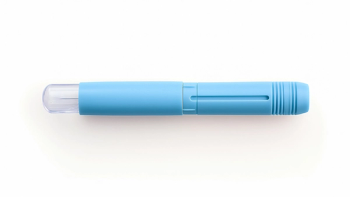
The Future of Clinical Development is Here: Research in MicroOrgans
Moe Alsumidaie sits down with Ping Yeh, CEO and co-founder of StemoniX, to discuss how MicroOrgans will transform preclinical and clinical development in challenging areas like Alzheimer’s.
The concept of running preclinical models and clinical trials in a petri dish was the talk of futurists and speculators several years ago. This model is now a reality, as some enterprises, such as StemoniX, have developed MicroOrgans that respond like real organs in preclinical development. This model can significantly improve the efficiency and scalability of early phase drug development, as biopharmaceutical enterprises and research institutions can screen compounds at scale with increased biological accuracy to more quickly make impactful discoveries. Ping Yeh, CEO (who suffered from Hodgkin’s lymphoma) founded StemoniX in collaboration with Rob Petavich (StemoniX’s CSO) by expanding on Nobel Prize-winning scientist Shinya Yamanaka’s technique to create induced pluripotent stem cell technologies from the skin. In this interview, Yeh will discuss how MicroOrgans will transform preclinical and clinical development.
Moe Alsumidaie: Can you tell me about StemoniX’s technology and the therapeutic areas that StemoniX is focusing on?
Ping Yeh: Our microOrgan platform technology delivers plates containing ready-to-use functional microtissues. We are focused on easing the demands of researchers working on a massive scale, knowing that plug-and-play capabilities in an existing infrastructure was essential to adoption. Instead of forcing customers to buy expensive equipment, they can leverage what they already have.
We looked at widely used international standard plates and placed our human microOrgans on those basic standard plates. Off of that framework, we made our microBrain and microHeart assays. There will also be new microOrgans coming soon that we are pretty excited about.
MA: How can your technology assist with advancing therapies in challenging areas like Alzheimer’s?
PY: I think we affect positive change in a couple of ways. First, we are moving away from animal models--they have a role in the discovery process, but we want to focus on scalable, consistent human models. Second is our ability to use the human microOrgan platform to reconfigure diseases.
Partners in the U.S. and around the globe send us disease lines for drug screening applications. We use our proprietary technologies to make these cell lines more accurately resemble human tissue by structuring them into fibers or spheres. This structuring increases their functionality. We also replicate the right cell diversity to mimic what is in the human body. We convert skin stem cells, or iPSCs, into these organ cells and then shape them into microOrgans.
MA: Can these microOrgans evaluate efficacy in addition to toxicity?
PY: Yes. Top pharmaceutical companies that we have been working with have validated our microBrain 3D platform for identifying neurotoxicity, and now they are being used for efficacy as well. Clients are providing us with disease lines and requesting that we model them on microBrain 3D assays and produce them at scale for efficacy screening.
We presented data at the SLAS2019 annual meeting, demonstrating the ability of microBrain 3D to produce a functional in vitro disease model for Rett Syndrome, a neurodevelopment disease that has no cure. We created a microBrain 3D model via human induced pluripotent stem cells derived from a Rett patient which had been presented in the past in peer-reviewed papers. We then performed a screen on the patient-derived microBrain 3D model and, in just a couple of weeks, discovered hits on compounds that rescued the brain activity of the disease model back to "normal” function.
We can get a very consistent signature with our microOrgans. A microBrain produces a consistent signal of calcium release at the synapses because we form a functional network of neurons that produces a synchronized signal after being aged for a couple of months. A key hurdle to overcome for using microOrgans at scale is reproducibility across manufacturing batches, and our manufacturing and quality processes ensure that reproducibility. Initial primary or secondary screens can be performed off of that highly functional and reproducible signal, which is appealing to Big Pharma.
Once you can find those hits, you can dig a little bit deeper. However, the first level of screening can be done on the calcium burst behavior of our microBrain.
In another efficacy application, we have also partnered with the National Center for Advancing Translational Sciences (NCATS) to conduct drug screening on microBrain 3D as part of the NIH HEAL (Helping to End Addiction Long-TermSM) Initiative. We are excited to contribute to this vital research initiative and assist NCATS’s search for improved therapeutic options for pain and addiction that address this national crisis.
MA: Regulation is a critical facet in research; In clinical trials, we have GCP. In the lab, we have GLP. Manufacturing we have GMP. What would be regulating the organoids from a regulatory standpoint?
PY: Currently, regulations do not govern organoids as applied to drug discovery screening since they are used early in the preclinical drug development process. However, for safety and toxicity, regulators and the pharma industry have taken an interest in the regulatory aspects of these models. The FDA partnered with HESI (Health and Environmental Sciences Institute) and industry to create the CIPA (Comprehensive in-vitro Proarrhythmia Assay) Initiative for cardiac safety applications. HESI has also partnered with industry on the Translational Biomarkers of Neurotoxicity subcommittee (NeuTox) focused on the application of these models to predict drug-induced seizures.
StemoniX is excited to be a part of the conversations to make these human in vitro models a standard. Also, while GMP is not a requirement for our products, we adopt those principles for manufacturing and quality. Assay consistency is a critical requirement in drug discovery and toxicity research. You have to know that the assay and cellular response are reproducible. Our microOrgans are consistent in size and composition, which means that the response is the same every time.
MA: Would you say your microOrgan models provide an indicator for Big Pharma to continue development? For example, if a drug showed positive signals using the organoid structures, does pharma go back and do the animal models again?
PY: One of our goals is to minimize the use of animal models. You can use our human in vitro models before animal testing to narrow the number of candidate drugs that will be tested in animals as well as reducing the number of animals that need to be tested with each drug.
There has been a case where one of the top 10 pharma companies observed that our microBrain platform was able to identify clinical failures. They did not tell us how many of the clinical failures we found. If we consider that the average clinical failure could cost three to five hundred million depending on when the program is cut, we are giving them significant value.
The Big Pharma companies are building us into their traditional workflows now. We supply microBrain plates for their routine screens and also conduct regular screens as a service for clients. We are pretty excited that we are getting into the guts of how they discover new compounds.
StemoniX favors a “fail early and cheaply” model. One in 5,000 compounds makes it from discovery to approval. Our goal is to whittle down those 5,000 compounds as quickly as possible and as early as possible to reduce costs in the drug discovery process.
MA: Could you tell me what it would look like 10, 15 years from today if it were the industry standard to use microOrgans to research new therapies? How would that change and transform the advancement of new therapies?
PY: Ten to fifteen years from now, the number one difference will be efficiency. The time to get those compounds to Phase I clinical trials will shrink. Another potential change could be having a higher success rate. Right now, on average, the failure rates of compounds in clinical trials is around 90 percent.
Another potential change would be to efficacy. Today, the efficacy of the top 10 grossing drugs in the United States is between four and twenty-five percent. In the next decade or so, precision medicine is going to benefit from what we are doing at StemoniX. When we create a model based on a disease line, knowing the genetic mutations that are occurring in those lines, then we are better able to say, "This therapeutic works for this particular gene or genes." That precision is going to increase success rates and increase efficacy for the patient.
MA: What about oncology? Everything is moving towards specific genomic therapeutics and highly customizable therapies for patients. How can your technology contribute to genomic advancements?
PY: We have created a proof of concept model of glioblastoma, which has no cure. There, we have taken tumor cell lines and integrated them with our healthy microBrains. We have observed some fascinating behavior of the tumor cells.
A lot of oncology research focuses on in vitro study of the tumor cells themselves or on in vivo work where, for example, they implant the tumor on the back of mice for observation. StemoniX is combining tumor cells with healthy human microBrains at scale. We have observed the tumor cells parasitically attack the microBrain and destroy the neural network in a matter of days. This activity is visible on a simple and consistent microBrain plate, but not on the back of a mouse.
I think that the approach of integrating tumors with healthy cells provides a relevant system of cancer cells invading healthy tissue right in front of your eyes that can lead to therapies we have never even considered. So that is pretty exciting. Moreover, we can do that same model with our other platforms as well.
To combine your oncology and timing questions, it is entirely reasonable to predict that in 10-15 years, or probably less, we will see the technologies discussed here; high throughput screening, iPSC technology, and relevant micro-tissues, advance to the point where individual patient therapy is finely tuned by lab experiments using their own healthy and tumor cells before they are ever given a drug in the clinic. This will be the start of the true precision medicine revolution where we see treatment success significantly increase, and toxic outcomes significantly decrease.
Newsletter
Stay current in clinical research with Applied Clinical Trials, providing expert insights, regulatory updates, and practical strategies for successful clinical trial design and execution.






.png)



.png)



.png)
.png)
